PromoChess
By Glenn Overby
Introduction
Japanese chess, Shogi, has two major features that are not found in orthodox Western chess. One is the ability of captured pieces to return to play for their captor. This is explored nicely in different ways in such games as Chessgi, Hostage Chess, and Bughouse.
The other is the ability of almost every piece to promote upon moving into a promotion zone. This is the theme of PromoChess, played on a Shogi-size 9x9 board, and using a mix of Japanese, Western, and fairy pieces. Whenever a piece moves into the opponent's third of the board, it may (and normally does) promote, gaining an enhanced movement.
Setup
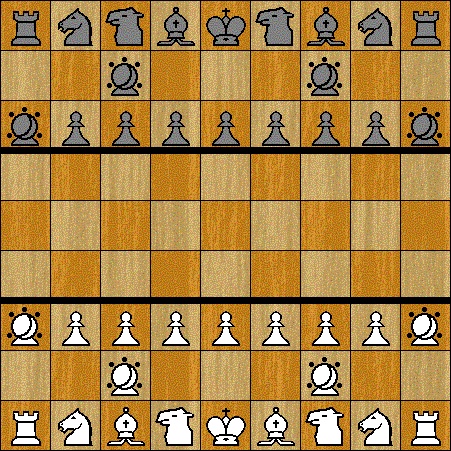
| White | Black | |
|---|---|---|
| b3,c3,d3,e3,f3,g3,h3 | 7 Pawns | b7,c7,d7,e7,f7,g7,h7 |
| a3,c2,g2,i3 | 4 Silvers | a7,c8,g8,i7 |
| a1,i1 | 2 Rooks | a9,i9 |
| b1,h1 | 2 Horses | b9,h9 |
| c1,f1 | 2 Bishops | d9,g9 |
| d1,g1 | 2 Camels | c9,f9 |
| e1 | 1 King | e9 |
| Graphics by David Howe and Glenn Overby. | ||
Pieces
Pawn | 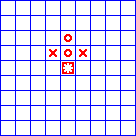 |
The Pawn may move one square straight forward, only if the square in front of it is empty. The Pawn may move one square diagonally forward, only when capturing an enemy piece on that square. A Pawn promotes to Gold after entering the promotion zone. If the two squares directly in front of a Pawn are both empty, the Pawn may make a two-square move. Unlike the double-step in orthodox chess, this may be done at any time. (There is no en passant capture.) |
Silver | 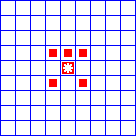 |
The Silver may move one square diagonally, or one square straight forward. It has five possible moves in most positions. A Silver promotes to Dragon after entering the promotion zone. |
Rook | 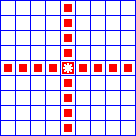 |
The Rook may slide any clear distance horizontally or vertically. It may not leap over any piece, or move onto a square occupied by a friendly piece. Unlike orthodox chess, there is no castling. A Rook promotes to Queen after entering the promotion zone. |
Horse | 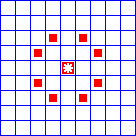 |
The Horse moves one square horizontally or vertically, turns 90 degrees, and continues two squares; or the opposite (two squares, turn, one square). In either case it ignores intervening pieces and leaps from square to square. A Horse promotes to Marshal after entering the promotion zone. |
Bishop | 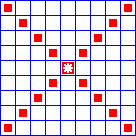 |
The Bishop may slide any clear distance along a diagonal. It may not leap over any piece, or move onto a square occupied by a friendly piece. A Bishop promotes to Janus after entering the promotion zone. |
Camel | 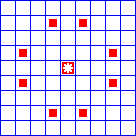 |
The Camel moves one square horizontally or vertically, turns 90 degrees, and continues three squares; or the opposite (three squares, turn, one square). In either case it ignores intervening pieces and leaps from square to square. A Camel promotes to Wildebeest after entering the promotion zone. |
Gold | 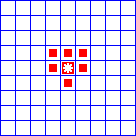 |
The Gold is a promoted Pawn. It may move one square in any direction except diagonally backward. It has six possible moves in most positions. |
Dragon | 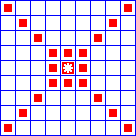 |
The Dragon is a promoted Silver. It may move like a Bishop, sliding any clear distance along a diagonal, or one square horizontally or vertically. |
Queen | 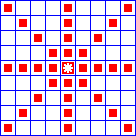 |
The Queen is a promoted Rook. It may move like a Bishop, sliding any clear distance along a diagonal, or like a Rook, sliding any clear distance horizontally or vertically. |
Marshal | 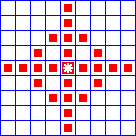 |
The Marshal is a promoted Horse. It may move like a Rook, sliding any clear distance horizontally or vertically, or like a Horse, with a (1,2) leap. When moving like a Horse the Marshal ignores intervening pieces. |
Janus | 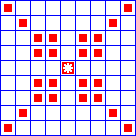 |
The Janus is a promoted Bishop. It may move like a Bishop, sliding any clear distance along a diagonal, or like a Horse, with a (1,2) leap. When moving like a Horse the Janus ignores intervening pieces. |
Wildebeest | 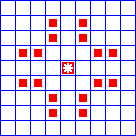 |
The Wildebeest is a promoted Camel. It may move like a Horse with a (1,2) leap, or like a Camel with a (1,3) leap. It ignores intervening pieces. |
King | 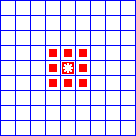 |
The King may move one square in any direction. As in most forms of chess, the King may not move to a square that is attacked by an enemy, and must not be left in a position where it is being attacked by an enemy. |
Rules
The ordinary rules of chess apply except where piece-rules contradict them.
In addition, every piece on the board at start except the King has the ability to promote. Any piece moving to a square in the seventh, eighth, or ninth rank may promote to a specific type according to its nature. Pawns become Golds, Silvers become Dragons, Rooks become Queens, Horses become Marshals, Bishops become Januses, and Camels become Wildebeests.
Playing Tips
Be patient. PromoChess games are longer than Western chess, on a par with Shogi.
There is no equivalent of castling, and no convenient way to make the king safe. The best defense is often a good offense.
The theme of promotion dominates the middle game. An unanswered promotion or two will lead to a dominant material advantage. Be aware that the Horse probably gains the most by promotion (to Marshal). Silver to Dragon is also a large upgrade. Of the other pieces, the Bishop likely gains the least (to Janus).
The possibility of perpetual check is sometimes an endgame theme for a player down on material. There is an abundance of highly-mobile power pieces available through promotion.
Computer Play
If you have Zillions of Games installed on your computer, you can play this game. Download file: promochess.zip.Example of Play
White is up only a Horse in this endgame. But the unique PromoChess rules lead to a mate in five.
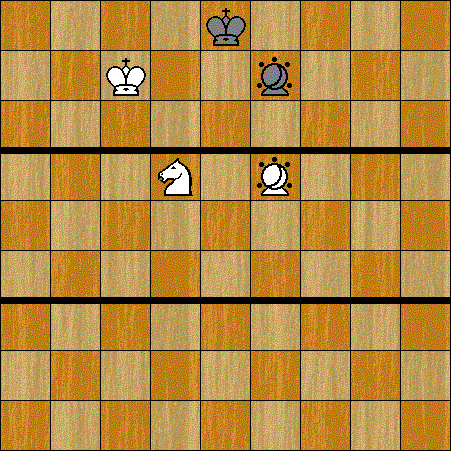
After 1. Kd7, all roads lead to disaster for Black.
Black's 1...Kd9 is met by 2. He8=M, with mate on c7 or g9 next turn depending on the Black Silver's move. Black's 1...S any is met by 2. Hf7=M+ Kd9 (forced) with a back-rank mate following.
Life is prolonged only slightly by Black's best defense. After 1...Kf9 2. He8=M:
- 2...Kf8 3. Sg7=D+ Kh9 (if 3...Kf9 4. Dxf8++) 4. Mxf8+ Kg9 5. Md9++.
- 2...S any forward elicits 3. Mg7+ Kf8 4. Sf7=D+ Ke9 5. De8++.
- 2...Se9 ends one turn sooner, as 4. Sf7=D becomes mate.
- Lastly, 2...g9 leads to the pretty 3. Me7+ Kf8 4. Sg7++, where the Silver doesn't even need to promote.
Written by Glenn Overby II.
WWW page created: May 17, 2003.